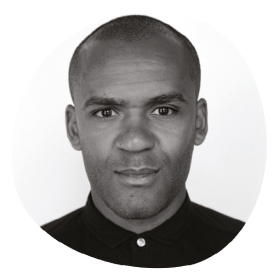2019 State of Branding Report
tech.
marketing.
creative.
Key insights into the thoughts, challenges and priorities of the modern brand marketer
Download the report“Brands embracing digital transformation don’t wait for change, they look for change.”
Introduction
A warm welcome to Bynder and OnBrand’s State of Branding Report 2019; packed with expert insights to help marketers tackle the year ahead with perspective and confidence.
With the help of independent research firm Survata, we got inside the heads of 501 marketing decision-makers to discover their biggest challenges and opportunities going into 2019, what’s at the top of their to-do lists, and how they’re leveraging the latest industry trends to woo—and keep—customers.
Now more than ever, marketers are at the whim of a rapidly- changing digital landscape that’s revolutionizing how brands and audiences interact. Unraveling this complex web between branding, technology, and people is essential for brands to get their voices heard and stand out from competitors.
This report will snapshot the thoughts and working habits of the modern marketer, and uncover five key findings—with some deeper dives—that provide invaluable insights on both the current and future states of branding.
A Snapshot Summary
At a glance, our results reveal the typical challenges and opportunities that marketers are now grappling with as they contend with the rapid changes to the tech landscape and consumer behavior patterns:
- For the second year in a row, identifying the right tech to serve as an extension of a brand continues to be a top challenge for many of today’s companies
- Customer experience is believed to be the most effective way to differentiate a brand from competitors and engage with consumers
- Marketers are more reliant on social media than ever before, but many are wary that frequent algorithm changes are a major threat to online brand engagement
- Companies are ramping up investment in branded visual content to help cut through the digital noise
Methodology
This survey was conducted with Survata, an independent research firm based in San Francisco. Survata anonymously surveyed 501 marketing decision-makers at organizations across the United States and the United Kingdom between November 28, 2018 and December 11, 2018.
Demographics
- Decision-making role
- Sole decision-maker 45.7%
- Shared decision-making
responsibility 54.3%
- Company size
- 501 - 1,000 25.5%
- 1,001 - 5,000 34.5%
- 5,001 - 10,000 21.4%
- More than 10,000 18.6%
- Type of organization
- Business-to-Business (B2B) 17.2%
- Business-to-Consumer (B2C) 39.7%
- B2B and B2C 25.7%
- Non-profit/Government 16.8%
- Industry
- Financial Services 12.0%
- Consumer Products 11.4%
- Healthcare and Medical 11.0%
- IT and Services 10.8%
- Education 10.2%
- Industrial and Manufacturing 7.2%
- Other 5.4%
- Marketing Agencies 5.0%
- Travel and Tourism 5.0%
- Media and Publishing 4.8%
- Telecommunications 4.0%
- Software 3.8%
- Nonprofit/Government 3.4%
- Staffing and Recruiting 2.4%
- E-commerce 1.4%
- Research 1.2%
- Sports and Recreation 1.2%
Key findings
Majority of brands playing it safe with their 2019 tech investments
Planned tech investments for branding and marketing purposes in 2019
94% of respondents feel that it is “very” or “somewhat” important for their company to invest in new technologies in 2019, with customer experience and engagement proving to be the number one motivation. Experimental technologies such as AI, virtual reality and voice assistants are firmly on the investment radars of most, but more established outlets—such as the development of effective mobile apps, progressive web apps, and digital asset management software—still make up the largest slice of most marketing budgets.
Mobile applications
Progressive web applications
Digital asset management platforms
Artificial intelligence
Design templating
Voice assistants
Virtual reality
Key findings
Social media more powerful than ever, but brands wary of algorithm changes
Top 3 biggest threats to digital brand engagement according to respondents
Respondents identified social media networks as the most fruitful channels for reaching target audiences and influencing buyer behavior. However, 65% feel that algorithm changes are the biggest threat to online brand engagement.
Key findings
Customer service key in cutting through the digital noise
Tactics considered most effective for reaching consumers in a crowded digital landscape
30% of marketers surveyed believed that “excellent customer service” was the most effective way to stand out from the crowd and engage with consumers—even more than the product itself or the quality of brand campaigns. However, respondents felt that finding the best online channels to reach audiences was a significant challenge.
Excellent customer service
Content personalization
Innovative campaigns
Superior product
Community involvement
Company storytelling and vision
Other
Key findings
Heavier investment in branded visual content
How much do you plan to invest in branded visual content in 2019?
66% of marketing decision-makers will be investing more in creating branded visual content than they did in 2018. Why? To boost visibility and engagement with their target audiences (42%), and to stand out from the competition (22%).
More than in 2018
The same as in 2018
Less than in 2018
Will not be investing at all
Unsure at this moment
Key findings
Challenges associated with personalization
Biggest challenges associated with personalization
Last year’s report revealed “personalization” to be the trend that brands were most excited to explore in 2018. However, half of this year’s respondents are only somewhat confident or not confident at all about their ability to architect personalized experiences for existing or prospective customers. It seems many brands are still figuring out the best way to ensure personalized content targets the right audience, and whether or not their company is equipped with the right tech to support personalization efforts.
Ensuring the right personalized message reaches the right audience
Having the right technology to support personalized content and experiences
Balancing personalization while maintaining brand voice
Generating personalized content efficiently
Generating personalized content affordably
Emerging tech investments

“In 2019, brands will continue to exploit the fascination of users with emerging technologies. People have a special taste for on- trend tech and the constant stream of new innovations keeps this addiction alive. This is concerning however, as emerging technologies pose new questions and challenges involving privacy, overdependence and corporate exploitation. When does emerging technology become dangerous? And where is the limit?”Alain Sylvain, Founder and CEO Sylvain Labs
Now more than ever, technology acts as a catalyst for the marketing of tomorrow as brands aim to stay relevant and gain that competitive edge. With the stakes so high in a rapidly- evolving tech landscape, 93.8% of respondents felt that it was “very” (62.7%) or “somewhat” (31.1%) important for their company to invest in emerging technologies for 2019, with customer experience and engagement (40.5%) proving to be the number one motivation.
Despite this optimism, it seems that most companies are treading lightly when it comes to the new and novel and ensuring that more foundational marketing channels are performing optimally first and foremost.
Among those surveyed, the majority of tech investments related to more established outlets such as the development of effective mobile applications (65.7%), progressive web applications (50.1%), and digital asset management software (46%), rather than more experimental technologies such as AI (45.1%), voice assistants (40%), and virtual reality (36%).
The growing wealth of tech solutions at the disposal of marketers can be a blessing and a curse: how do brands ensure their investment is a reliable one while making sure it aligns with their brand identity?
For the second year in a row, “identifying the right tech serve as an extension of their brand” continues to be the most frequently cited challenge when it comes to the adoption of new technologies such as chatbots, voice assistants and AR/VR.
Getting your brand voice heard

“At Growth Tribe, we see algorithm changes as an opportunity rather than a threat. Most social algorithm changes are made to improve the user experience and increase the value that users get from the platform. Therefore, algorithm changes tend to work in favour of companies that have a healthy content strategy—one that offers value to their audience. Companies who have a culture around creating a wholesome user experience tend to be rewarded.”David Arnoux, Co-Founder of Growth Tribe
With what seems like an ever-growing, everchanging landscape of digital channels out there for marketers to get their voices heard nowadays,does the old adage that “content is king” still ring true in 2019? Content Marketing Institute reported 91% of marketers were committed to content marketing efforts in 2018, but how much of this content is actually engaging with consumers, and how much is clutter?
In an effort to cut through the digital noise, 66.5% of marketing professionals are planning to spend more on branded visual content compared to last year, with the main reason being increased visibility and engagement among their target audiences (41.6%).
If McKinsey’s recent report into the value of design is anything to go by, this could prove to be a sound strategy: firms that embrace design generated 32% more revenue and 56% more shareholder returns than rivals over a five-year period.
When it comes to influencing buyer behavior, social media was believed to be the most effective channel for reaching target audiences. Yet despite this optimism towards the power of social, less than half of respondents feel “very confident” that their brand is heard in the online space. This lack of confidence may be attributed to the perceived threat of social media algorithm changes—identified as the biggest obstacle to digital brand engagement (65.7%) in 2019.
Connecting with demanding, distracted consumers

“Today, brands have more channels than ever before to reach out and connect with audiences. This can lead to a lot more impact, but also a lot more meaningless noise. To cut through and generate meaningful engagement, choosing the right medium paired with the right message has never been more important.”Lucy von Sturmer, Founder The Humblebrag
New technologies are emerging at a rapid rate, and with a growing number of digital channels to grapple with, marketers are under pressure to figure out what exactly is worth their time and investment—made harder when you consider that consumer attention spans are a precious and dwindling resource.
With that in mind, the top challenge for companies when it comes to customer engagement was finding the most relevant and targeted channels for reaching their target audience (28.3%). So what’s the best way for brands to break through to consumers in today’s crowded digital landscape?
Marketers reported excellent customer service to be the most effective tactic (29.9%), more so than content personalization (15.6%) or even the product itself (13.8%).
If customer experience is such a key driver of brand differentiation nowadays, a major challenge for marketers this year will be placing CX efforts at the heart of a brand’s strategy:
“Customer experience (CX) quality has been a recurring theme for years. CMOs will now tackle this perennial problem by returning to their roots and grounding CX efforts extensively with brand.” — Forrester Predictions 2019.
The majority of marketers were “very confident” (47.5%) or “somewhat confident” (47.1%) in their brand’s ability to create personalized experiences for their customers, with targeted marketing and advertising campaigns seen as the most effective personalization tactic to influence buyer behavior (30.3%). However, getting personal with consumers has its challenges, and “ensuring the right personalized message reached the right audience” was reported to be the most common challenge associated with personalization tactics (25.7%).
About Bynder & OnBrand
Bynder empowers some of the world’s most iconic brands with a digital asset management (DAM) service that simplifies the management of digital content and brand operations via one central hub.
OnBrand represents Bynder’s community of digitally savvy professionals exploring “what’s next?” in branding, marketing, and technology.
Known for hosting Europe’s leading branding conference, an annual event in Amsterdam, OnBrand aims to drive conversations on the future of marketing via insightful keynotes, fiery panel discussions, and global networking opportunities.